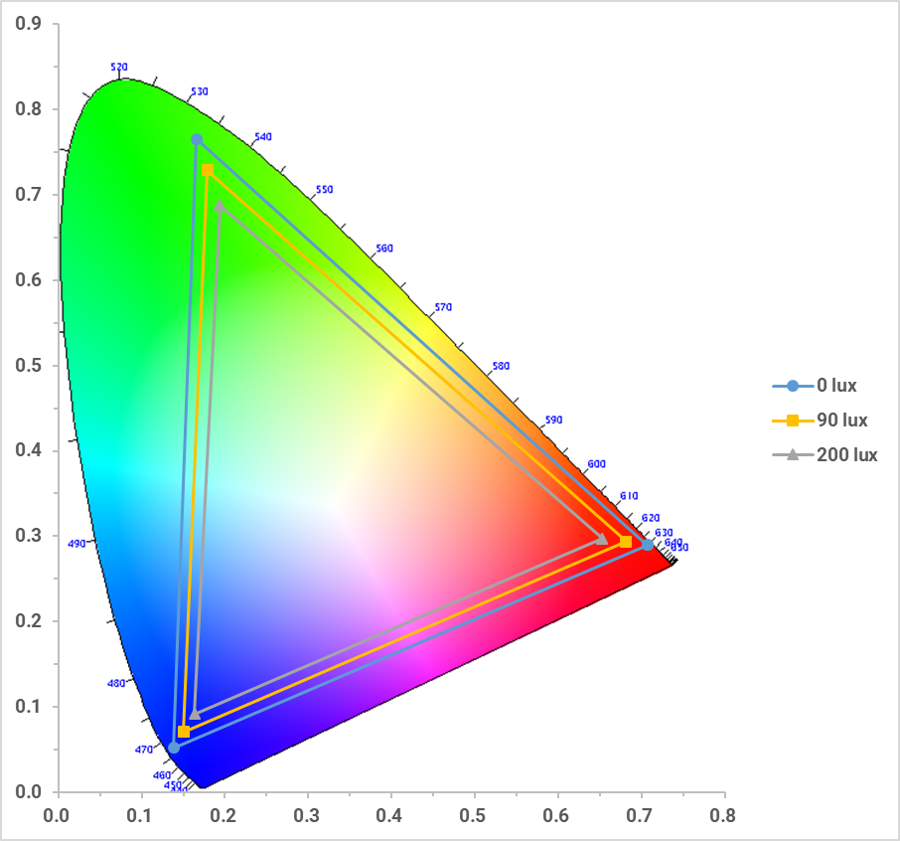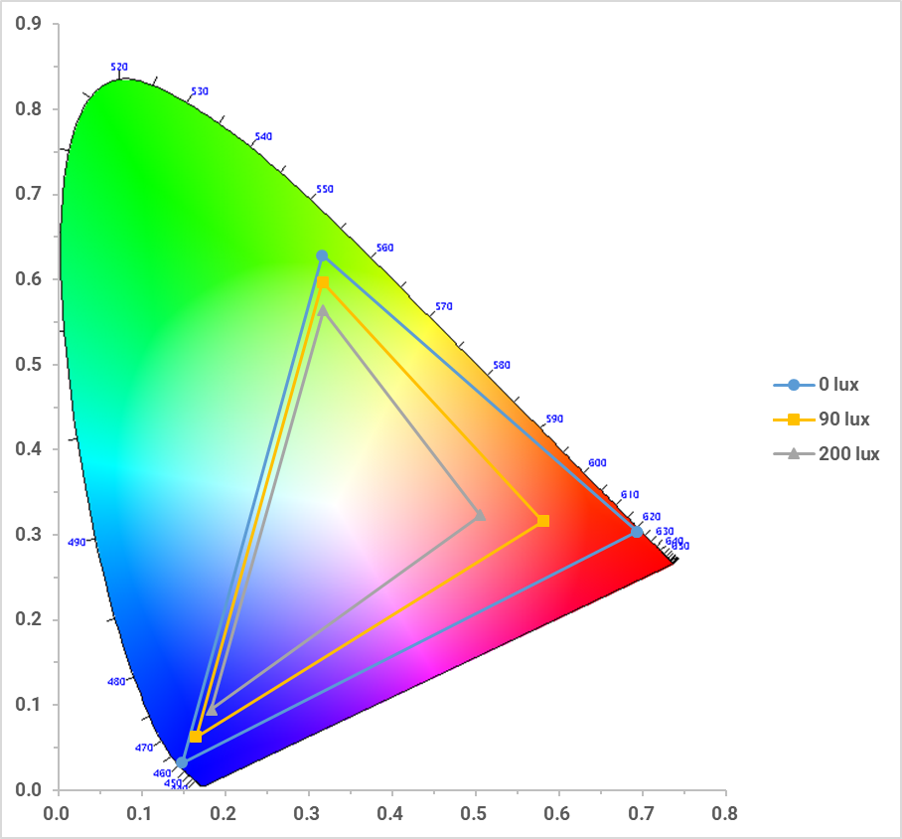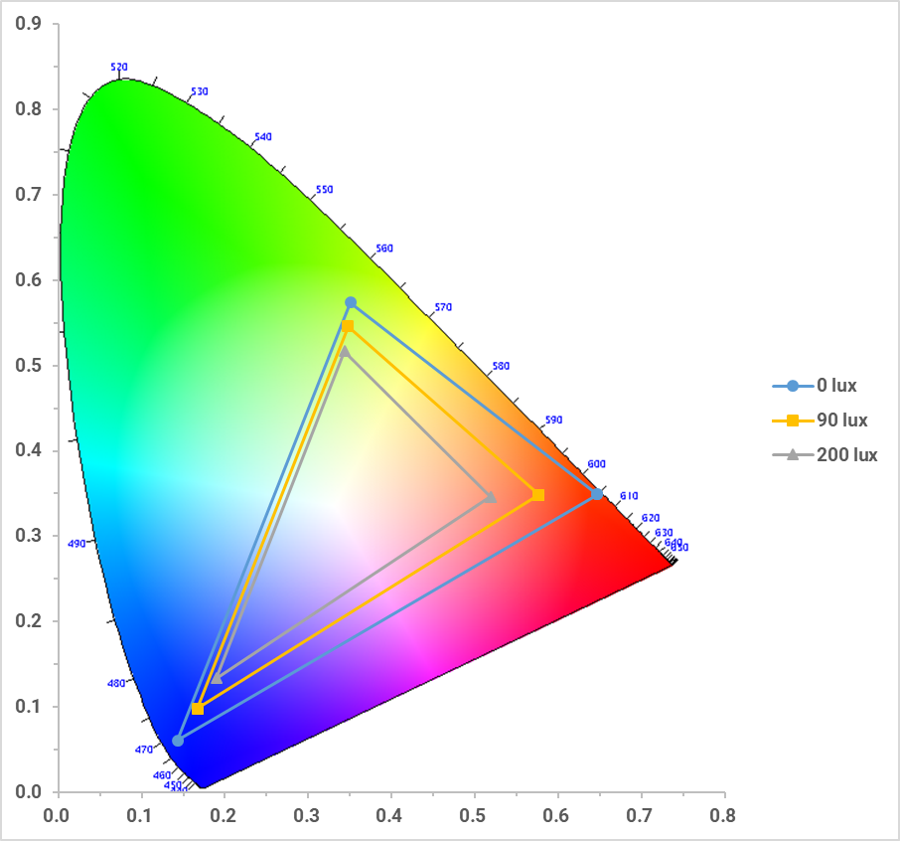Why ANSI Lumens Shouldn’t be the Last Word for Projector Brightness
- BenQ
- 2022-05-05


When evaluating the brightness of a projector, it’s natural for a prospective buyer to make comparisons based solely on the numbers listed in each projector’s specification tables. This is because the industry’s use of a standard unit, ANSI lumens, to measure projector brightness seemingly allows consumers to create apples-to-apples comparisons. But this type of focus on specifications might not always be advisable when it comes to evaluating brightness, as there is an aspect of brightness that tends to get overlooked when ANSI lumens gets all the attention: and that is its relationship to color performance.
What is ANSI Lumens?
As stated above ANSI lumens has become the standard measure of brightness in the projector market. Developed by the American National Standards Institute (ANSI), ANSI lumens is a unit that is derived by averaging the values of brightness readings (using an illuminance meter) from several different points on a projected white screen (click here to read more about ANSI Lumens). Its prominence in the projector market is due to the objectiveness of its methodology and the implied trustworthiness, which in turn allows consumers to have faith in the idea that if a projector has a higher ANSI lumen brightness value than another, it will be a brighter projector.
Does all of this mean that ANSI lumens should be the be all and end all on how to judge a projector’s brightness? A deeper dive into the issue reveals that the use of ANSI lumens misses a key element that may impact how to judge a projector’s brightness.
What ANSI Lumens Overlooks: The Helmholtz–Kohlrausch Effect:
Though ANSI lumens is a measurement that is undeniably objective – from its standard methodology to the instrument it uses – questions may arise when you consider it in terms of its usefulness vis-à-vis projectors, this is because projected images are meant to be seen and seeing is subjective. What this points to is the fact that ANSI lumens, because it is an objective measure, does not take into account that the physiology behind human vision may affect how we perceive an image and its brightness. An example of this is how the use of ANSI lumens neglects the potential of the Helmholtz–Kohlrausch Effect.
The Helmholtz–Kohlrausch Effect is the phenomenon, most common in colored lights, whereby a person sees highly-saturated colors as brighter than they “objectively” are due to the mechanics of the eye. This effect is most keenly felt when comparing colors of the same luminance level (i.e., brightness) but with different levels of saturation; in these scenarios the most saturated (or “purest”) color will appear to be brighter than all the other colors despite their equivalent luminance value. This phenomenon even functions to a degree where it can make colored lights seem brighter than a white light with the same level of luminance.

In the image above all the colors have the same measured brightness, yet the most saturated colors appear brighter
The implications of this for the projector market is that projectors which are able to generate more highly saturated colors will be able to produce images that can be observed as being brighter than their specs indicate, since most often their brightness values are expressed in the terms of “objective” ANSI lumens. In other words, a projector’s color performance not only helps its ability to produce accurate images, but also boosts the brightness of said images. This is particularly true for projectors that utilize LEDs or lasers as their light source, as opposed to projectors that use a traditional lamp, due to the fact that such technologies allow for better color performance. Thus, when looking for a projector, a consumer should not only make comparisons based solely on how high a projector’s ANSI lumens value is, which would skew towards projectors with traditional bulbs as they tend to produce higher ANSI brightness levels, but should also take into consideration the overall performance of the projector, particularly its color performance.
When is the Helmholtz–Kohlrausch Effect Not as Effective?
Despite acknowledging that color performance, as a result of the H-K effect, can have a positive impact on a projector’s perceived brightness, it’s important that we also discuss the limits of the H-K effect since the degree to which it is effective may contribute to the success of a projector.
The Dulling Effect of Whites, Greys, and Unsaturated Colors
When defining the H-K effect above, we mentioned that it allowed highly saturated colored lights look brighter than an equivalent white light, a consequence of this is that for visual content which features a higher proportion of whites, greys, or unsaturated colors, the projected image will not feature as much of a brightness boost. As a result, the resulting brightness levels for such content will be much more in line with the original ANSI lumen value listed for the projector.
How Ambient Light Dilutes Colors
Because the H-K effect is a direct result of the colored lights from a projector, any ambient light (e.g., room lights or sunlight) that contributes to the total amount of light present in the room, will by definition dilute the concentration of the projector’s colored lights, thereby dulling the color saturation that the eye will perceive and consequently the potency of the H-K effect.

The H-K effect with the lights off
The H-K effect with the lights on
To demonstrate this concept, the charts below compare the intensity of the reds from different light sources when a room’s lights are turned on and off; the narrower the bandwidth is for a light source, the more saturated its red is. The first thing to notice is that regardless of the amount of ambient light, the level of saturation for the laser projector ranks highest followed by the LED projector and then the lamp projector. Where these charts illustrate the effect of ambient light is in how the lines for both the lamp and LED widen significantly once the lights are turned on, meaning ambient light had the effect of diminishing the saturation level of their reds for these light sources.
Spectrum Charts (Red)

Lights Off (Illuminance = 0 Lux)
Lights on (Illuminance = 90 Lux)
Lights On (Illuminance = ~200 Lux)

Laser

LED

Lamp
The image above shows the shrinking effect a higher amount of ambient light has on the color gamuts of each type of projector
Narrow Color Gamut = Muffled Colors
Since most LED projectors, where the H-K effect is much more pronounced, have wide color gamuts that tend to exceed the Rec. 709 and sRGB color standard, any visual content based on these narrower color gamuts require the projector to adjust (i.e. downgrade) its colors to match the content. The dampening of the resulting colors, as expected, will lead to muffling of the effectiveness of the H-K effect.
Conclusion
What this entire discussion adds up to is the suggestion, as indicated at the outset, that those looking to buy a new projector should not get caught up in focusing just on the brightness values listed in the projector’s specs. Instead, one should take a holistic approach that takes into account factors such as the space in which the projector will be used (e.g., the lighting conditions) and the content to be projected (e.g., the color palette of the image), and then base your decision on the type of technology (i.e. either lamp, LED, or laser) that best suits these conditions while keeping in mind the role color performance can play in producing brighter images.